Distributed Source

How do distributed energy systems impact the environment ?
Distributed energy systems, characterized by their clean and efficient nature, play a crucial role in modern energy systems. These systems primarily utilize renewable energy sources such as solar, wind, and biomass, and are typically located near energy consumers. This not only reduces transmission losses but also enhances the overall efficiency of energy utilization. The impact of distributed energy systems on the environment can be broadly categorized into the following key points: 1. **Reducing Greenhouse Gas Emissions** - **Decrease Fossil Fuel Dependence**: Distributed energy systems often use renewable energy sources, reducing the need for fossil fuels and thereby decreasing greenhouse gas emissions associated with traditional power generation. - **Promote Energy Diversification**: By combining various renewable sources, these systems help diversify energy production, further mitigating the environmental impact of energy reliance on any single source. 2. **Enhancing Energy Utilization Efficiency** - **Decentralized Production**: Producing energy closer to where it is consumed reduces transmission losses that occur in centralized power systems. - **Combined Heat Power**: Some distributed systems employ combined heat and power (CHP) technology, which can achieve higher energy efficiency rates, up to 80%-90%, compared to traditional methods. 3. **Mitigating Environmental Pollution** - **Reduction in Exhaust Emissions**: Renewable distributed energy sources like solar and wind inherently produce no emissions, significantly reducing air pollution compared to fossil fuel combustion. - **Minimizing Water Pollution**: Unlike some large-scale hydroelectric projects, distributed renewable sources have a minimal impact on water ecosystems and do not introduce pollutants into water bodies. 4. **Promoting Sustainable Development** - **Sustainable Resource Cycles**: Distributed systems often incorporate local energy cycles, promoting sustainable resource use and management at a community level. - **Eco-friendly Infrastructure**: The infrastructure required for distributed energy systems, such as solar panels and wind turbines, has a relatively lower environmental footprint compared to traditional power plants. 5. **Improving Ecological Biodiversity** - **Land Use Impact**: Distributed energy projects generally require less land compared to large-scale power plants, thus having a reduced impact on habitats and biodiversity. - **Habitat Preservation**: The decentralized nature of these systems allows for easier integration into existing environments without significantly disrupting ecological balance. 6. **Increasing Systemic Resilience** - **Disaster Response**: Decentralized energy systems can continue to operate even when the main grid fails, enhancing community resilience during natural disasters or other crises. - **Grid Stability**: Distributed energy resources can help stabilize the electrical grid by providing localized load balancing and peak shaving functions. 7. **Supporting Policy and Regulations** - **Policy Driving Forces**: Many governments encourage the development of distributed energy through favorable policies, aiming to reduce carbon emissions and promote sustainable development. - **Regulatory Frameworks**: Comprehensive regulatory frameworks ensure that the development of distributed energy aligns with environmental protection and sustainability goals. Additionally, while distributed energy systems offer numerous environmental benefits, careful planning and implementation are necessary to maximize their positive impacts. For instance, the extraction and processing of materials for solar panels and wind turbines can have environmental costs, necessitating strict oversight and environmentally friendly practices. Moreover, integrating distributed energy effectively into existing energy frameworks requires advanced grid management technologies and innovative market mechanisms.

How do distributed energy systems contribute to energy efficiency and sustainability ?
Distributed energy systems (DES) play a significant role in improving energy efficiency and sustainability. DES refers to a comprehensive energy utilization system located near the end-users, which can operate independently or in conjunction with the grid. It encompasses various technologies such as combined heat and power (CHP), renewable energy, energy storage, and fuel cells. Here is a detailed exploration of how distributed energy systems contribute to energy efficiency and sustainability: 1. **High Energy Efficiency** - **Combined Heat and Power (CHP)**: CHP systems generate both electricity and heat simultaneously, providing an overall efficiency of up to 80%-90%. This is considerably higher than traditional centralized power plants, which typically have an efficiency of around 40% for advanced coal-fired power plants. - **Energy Cascade Utilization**: Distributed energy systems utilize energy cascading, where the byproducts of one process are used as inputs for another. For example, waste heat from electricity generation is used for heating or cooling, maximizing energy utilization. - **Reduced Transmission Losses**: Due to their proximity to consumers, DES reduces the need for long-distance transmission of electricity, thereby minimizing transmission losses compared to centralized power systems. 2. **Environmental Protection** - **Low Emissions**: Distributed energy systems often use clean energy sources like natural gas, solar, and wind, which have lower emissions compared to traditional coal or oil combustion. - **Renewable Energy Integration**: Distributed energy systems can easily integrate renewable energy sources like solar panels and wind turbines, promoting the use of sustainable energy. - **Waste Reduction**: By using waste heat and integrating multiple forms of energy production, DES helps reduce energy waste and its associated environmental impact. 3. **Economic Benefits** - **Cost Savings**: Distributed energy systems can reduce energy costs by decreasing transmission and distribution expenses. They also provide more stable energy prices compared to fluctuating grid rates. - **Infrastructure Investment Reduction**: Since DES requires less infrastructure compared to large-scale power plants and transmission networks, it can lead to significant cost savings in infrastructure investment. - **Market Potential**: The development of DES has opened up new markets and business opportunities, especially in the sale and maintenance of distributed energy equipment. 4. **Enhanced Reliability and Resilience** - **Decentralized Architecture**: The decentralized nature of DES means that if one system fails, others can still operate, ensuring continuous energy supply. - **Storm and Disaster Resilience**: During large-scale disasters or extreme weather events, DES can serve as a crucial energy source when centralized power systems fail. 5. **Promotion of Smart Grid Development** - **Integration with Smart Grids**: Distributed energy systems can be integrated with smart grids, enabling two-way flows of electricity and information, which enhances overall grid efficiency and responsiveness. - **Demand Response Management**: DES allows for better demand response management, where consumption can be adjusted based on real-time supply and demand conditions, further enhancing energy efficiency. Additionally, there are several challenges and considerations for the widespread adoption of distributed energy systems: - **Technical Challenges**: The integration of multiple energy sources requires advanced technical expertise and sophisticated control systems. - **Policy Support**: While policies increasingly support DES, more comprehensive regulations and incentives are needed to encourage wider adoption. - **Economic Viability**: Although DES offers economic benefits, the initial investment can be high, which may limit access for some users. In summary, distributed energy systems contribute significantly to energy efficiency and sustainability through high energy utilization efficiency, environmental protection, economic benefits, enhanced reliability and resilience, and promotion of smart grid development. Despite certain challenges, the advantages of DES make it a critical component of future energy strategies.

What role do renewable energy sources play in distributed energy systems ?
Renewable energy sources are crucial for distributed energy systems due to their clean, sustainable nature and local generation capabilities. They reduce carbon emissions, enhance energy security, promote local economic development, improve energy efficiency, and enable innovation in these systems.
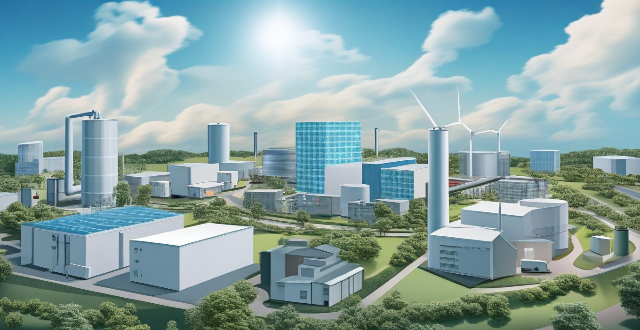
What are the benefits of using a distributed energy system ?
Distributed energy systems (DES) have become increasingly popular due to their numerous benefits. These systems can include solar panels, wind turbines, micro-hydro plants, and other renewable energy sources. The key benefits of using a distributed energy system are increased energy efficiency, lower energy costs, improved reliability and resilience, environmental sustainability, encouragement of local economy and job creation, promotion of energy independence and security, and flexibility and scalability. Adopting a distributed energy system brings numerous benefits ranging from increased efficiency and cost savings to improved reliability, environmental sustainability, economic development, and energy security.
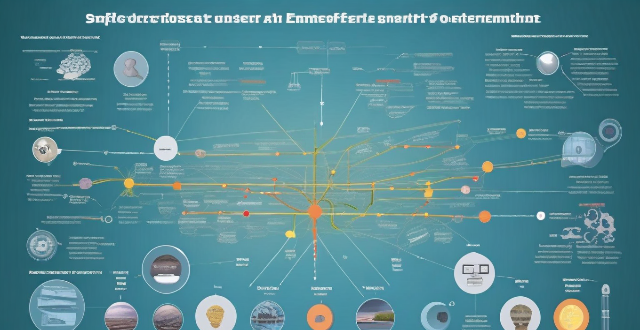
What are the costs associated with implementing a distributed energy system ?
This article discusses the different types of costs associated with implementing a distributed energy system, including initial investment costs, operational costs, and energy costs. It also emphasizes the importance of carefully considering these costs before making any decisions about whether or not to invest in such a system.

How does a distributed energy system work ?
A distributed energy system (DES) is a decentralized approach to power generation and distribution that utilizes renewable energy sources, energy storage devices, and smart grid technologies. The system works by generating electricity locally from renewable sources, storing excess energy for later use, and distributing power efficiently within a local area. This setup enhances efficiency, reliability, and sustainability while potentially reducing costs. DESs offer flexibility and adaptability to changing energy needs and technological advancements, positioning them as a crucial element in the future of energy infrastructure.

How effective is solar power as an alternative energy source ?
Solar power is a sustainable and environmentally friendly energy source with decreasing costs and increasing efficiency due to technological advancements.
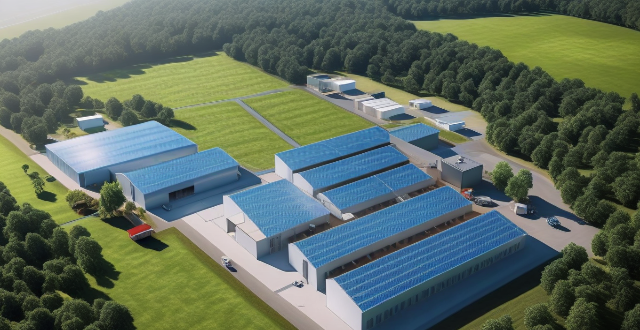
What are some examples of distributed energy systems ?
Distributed energy systems (DES) are small-scale power generation units located close to end-users, offering benefits like increased energy efficiency and reduced environmental impact. Examples include solar PV systems, wind turbines, fuel cells, and microgrids. These systems can operate independently or connect to the main power grid. Solar PV systems convert sunlight into electricity using silicon cells, while wind turbines harness wind's kinetic energy. Fuel cells generate electricity through a chemical reaction of hydrogen and oxygen. Microgrids are localized groups of interconnected loads and distributed energy resources that can operate independently from the main power grid. DES contribute to a more sustainable future by improving energy efficiency, reducing environmental impact, and enhancing electricity supply reliability.

Can hydroelectric power be considered a renewable energy source ?
Hydroelectric power is often considered renewable due to its reliance on the water cycle, but debates exist over its classification. Advantages include being a renewable resource, having low emissions, and providing energy storage. Disadvantages involve ecosystem impacts, community displacement, and siltation/erosion issues. The definition of "renewable" influences whether hydroelectric power is seen as truly renewable, with varying priorities leading to differing conclusions.

How important is it to have a backup power source in case of emergencies ?
The importance of having a backup power source in case of emergencies is crucial in today's world where we rely heavily on electricity. A backup power source can prevent data loss, maintain essential services, ensure safety, reduce downtime, and improve quality of life during power outages. There are various types of backup power sources available, including UPS, generators, solar power systems, and battery backups. Investing in a backup power source is an investment in peace of mind and preparedness for any emergency situation.

Can a Series Hybrid Electric Vehicle be charged by an external power source ?
Series HEVs can be charged by an external power source, which offers benefits like increased range and reduced emissions. To charge a series HEV using an external power source, you will need a compatible charging station or outlet. Most series HEVs come with a standard charging cord that can be plugged into a household outlet or a dedicated charging station.
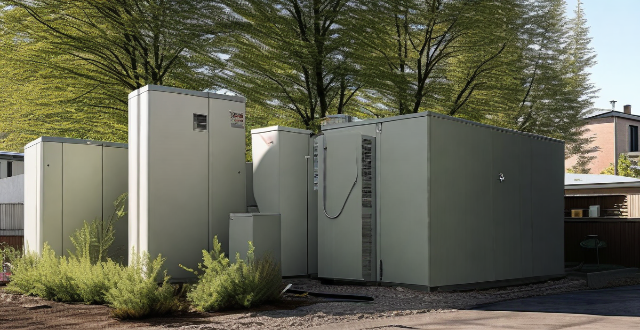
What is a distributed energy system ?
Distributed energy systems (DES) are integrated systems that generate, store, and manage energy near the point of consumption. They typically include renewable energy sources, energy storage devices, and control systems. The primary goal is to optimize energy production and consumption while minimizing environmental impact and enhancing energy security. Key features of DES include decentralized generation, renewable energy sources, energy storage, intelligent control systems, flexibility, and scalability. Benefits of DES include increased energy efficiency, improved reliability, reduced environmental impact, enhanced energy independence, and cost savings. Examples of DES include residential solar PV systems, commercial buildings with cogeneration, microgrids, and community energy projects.

What is the current state of fusion power research and its potential as an ultimate renewable energy source ?
Fusion power research aims to harness energy from fusing atomic nuclei, similar to the sun's process. Key developments include the ITER project, breakthroughs in magnetic confinement fusion, and advances in inertial confinement fusion. Challenges include technical hurdles, economic viability, and safety concerns. Fusion power has potential as an ultimate renewable energy source due to its unlimited and clean energy production, minimal environmental impact, and long-term sustainability.

In what ways can energy storage solutions improve grid stability and reliability ?
Energy storage solutions play a crucial role in enhancing grid stability and reliability. They contribute to balancing supply and demand, providing ancillary services, integrating renewables, improving resilience, optimizing economic efficiency, facilitating distributed generation, and supporting transmission and distribution systems. Energy storage systems can absorb excess energy during low demand periods and release it during peak times, helping to level the load on the grid. They also provide frequency regulation and voltage support, smoothing out the variability of renewable sources like wind and solar. Energy storage enhances resilience by providing blackstart capability and islanding, allowing parts of the grid to be isolated and continue supplying power in case of major faults. It optimizes economic efficiency by enabling arbitrage and deferring costly grid upgrades. Energy storage facilitates distributed generation by allowing consumers with distributed generation to store energy during off-peak hours and use it during peak time periods, reducing their electricity bills. Overall, energy storage solutions are becoming increasingly vital for modernizing and strengthening our electrical grids.

What are some potential challenges and drawbacks of distributed energy systems ?
Distributed energy systems (DES) offer benefits such as increased energy independence and reduced carbon emissions, but they also present several challenges. These include interconnection issues with the power grid, reliability concerns due to weather dependency and storage limitations, high upfront costs, complex permitting processes, operation and maintenance expenses, environmental impacts from resource extraction and waste management, potential job losses in traditional energy sectors, and shifts in energy market dynamics. Addressing these challenges requires technological innovation, policy development, and consumer education.

How can I install a distributed energy system in my home or business ?
Installing a Distributed Energy System (DES) in your home or business can significantly reduce reliance on the grid and provide financial savings. The process involves assessing energy needs, site evaluation, financial analysis, system design, permitting, installation, and maintenance. Choosing the right technology, sizing the system appropriately, and selecting quality equipment with certified installers are crucial steps. Permitting includes checking local regulations and coordinating with the utility for interconnection. Installation involves mounting equipment, electrical connections, and system checks. Maintenance ensures optimal performance through cleaning, inspections, and performance tracking. This investment requires careful planning but offers substantial rewards.

How are vaccines distributed globally ?
The global distribution of vaccines is a complex process involving various stakeholders, including governments, international organizations, pharmaceutical companies, and healthcare providers. The article discusses the different aspects of vaccine distribution worldwide, highlighting the challenges and opportunities in this critical field. It covers topics such as manufacturing and production, regulatory approval and licensing, international collaboration and partnerships, funding and financing mechanisms, logistics and delivery, administration and coverage, and more. By addressing these challenges proactively and leveraging available opportunities, we can work towards achieving equitable access to vaccines for all populations worldwide.
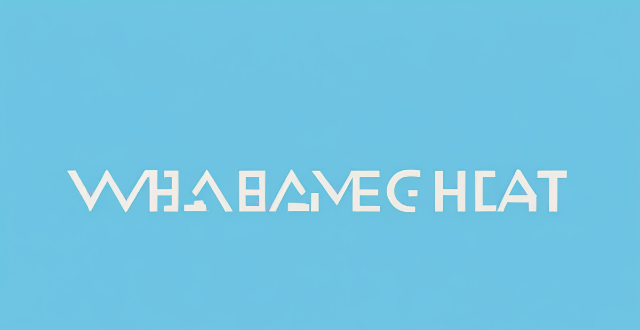
Can geothermal energy be a major source of power in colder climates ?
Geothermal energy, derived from the Earth's natural heat, can be a significant power source in colder climates. Key considerations include the availability of geothermal resources, technology and infrastructure, economic feasibility, environmental impact, and societal and regulatory factors. Challenges such as permafrost and public acceptance can be addressed through careful planning, technological innovation, and effective policy measures. If these factors are favorably aligned, geothermal energy could play a significant role in meeting the energy demands of colder regions while contributing to global efforts to combat climate change.
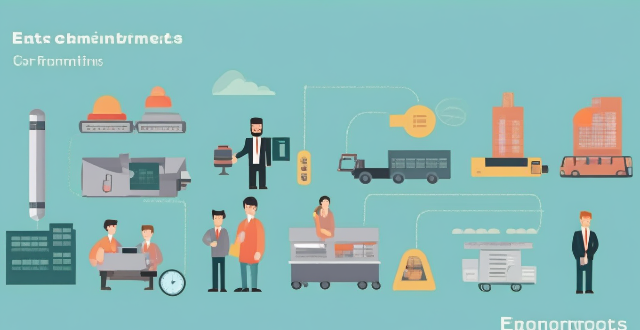
Can carbon credits be a sustainable source of income for developing countries ?
The article explores the potential of carbon credits as a sustainable source of income for developing countries, highlighting their benefits in revenue generation, sustainable development, and international cooperation. However, it also underscores the challenges such as market volatility, implementation complexities, and ensuring environmental integrity. The conclusion emphasizes that with robust frameworks and transparent monitoring, carbon credits can be a cornerstone of sustainable development strategies for developing countries.

Can ecological taxes be a sustainable source of revenue for governments ?
Ecological taxes can be a sustainable source of revenue for governments if implemented effectively. They promote environmental sustainability, generate revenue, and encourage innovation. However, challenges such as industry resistance, impact on low-income groups, and setting the right tax rate need to be addressed through careful policy design and public engagement.

What are the key considerations for integrating renewable energy sources into urban designs ?
Key considerations for integrating renewable energy sources into urban designs include assessing available renewable energy sources, prioritizing energy efficiency, ensuring grid connectivity, involving the community, and considering financial viability.
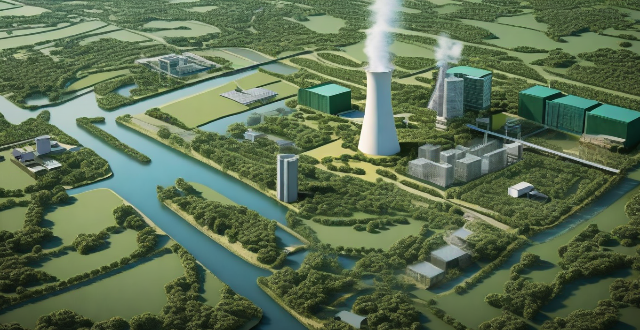
How does geothermal energy work and is it a viable alternative energy source ?
Geothermal energy is a renewable and sustainable source of energy that harnesses the natural heat from within the Earth's crust. This energy is obtained by drilling wells into the Earth's crust, where the heat is transferred to water or another fluid in a heat exchanger. The heated fluid then spins a turbine to generate electricity. There are three main types of geothermal power plants: dry steam, flash steam, and binary cycle. While geothermal energy has many benefits, including being renewable, cost-effective, and abundant in certain areas, it also comes with high upfront costs and location limitations. Additionally, there are environmental impacts associated with its use, such as potential contributions to earthquakes and impacts on local ecosystems. Despite these challenges, geothermal energy remains a valuable addition to our portfolio of renewable energy sources.

What are the challenges in developing and implementing tidal power as an alternative energy source ?
Tidal power is a promising alternative energy source that harnesses the energy of ocean tides to generate electricity. However, its development and implementation face several challenges, including technical, environmental, economic, and social aspects. Technical challenges involve efficiency and reliability issues with turbine design, maintenance, and power transmission. Environmental challenges include potential impacts on marine life and water quality. Economic challenges involve high upfront costs and market competitiveness. Social challenges encompass community acceptance, legal and regulatory hurdles, and local economy impacts. Addressing these multifaceted challenges is crucial for the successful development and implementation of tidal power on a larger scale.

How do I cite sources in academic writing ?
The text discusses the importance of citing sources in academic writing and provides guidelines on how to do so. It emphasizes the need to choose a citation style that aligns with the requirements of the discipline or institution, use in-text citations appropriately, create a reference list or bibliography, potentially use footnotes or endnotes, and maintain consistency throughout the paper. The text also includes an example of citing sources in APA style.
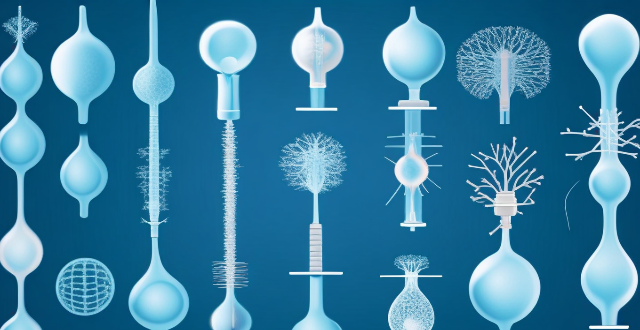
How do hydrogen fuel cells work and are they a practical alternative energy source ?
Hydrogen fuel cells are devices that convert the chemical energy of hydrogen into electricity. They consist of an anode, cathode, electrolyte, and external circuit. The process involves splitting hydrogen into protons and electrons at the anode, moving protons through the electrolyte, moving electrons through the external circuit, combining protons and electrons with oxygen at the cathode to form water, and producing heat. Hydrogen fuel cells are renewable, have high energy density, zero emissions, and versatile applications. However, they face challenges such as high cost, limited infrastructure, and safety concerns.

How does blockchain ensure decentralization and transparency ?
Blockchain technology ensures decentralization and transparency through a distributed ledger, consensus mechanisms like Proof of Work (PoW), Proof of Stake (PoS), and Delegated Proof of Stake (DPoS), node autonomy, immutable records via cryptographic hashing, public accessibility of the ledger, verifiable transactions using digital signatures, and smart contracts. These features create an environment resistant to manipulation and corruption, offering a paradigm shift in secure and accountable digital interactions.

How do I conduct research for an academic paper ?
This guide provides a step-by-step approach to conducting effective research for an academic paper, including determining the research question, gathering background information, finding and evaluating sources, analyzing and synthesizing information, organizing thoughts, citing sources properly, and revising and editing the paper. It emphasizes the importance of critical thinking, organizational skills, and seeking feedback throughout the process.

What is wind energy and how effective is it compared to other renewable sources ?
This article provides an overview of wind energy, discussing its definition, effectiveness compared to other renewable sources, cost-effectiveness, environmental impact, scalability, and availability. It highlights the benefits of wind energy as a clean and sustainable source of electricity that can be produced at any scale and in many parts of the world.